

Articles
How Does Water Get Into The Basement
Modified: April 22, 2024
Learn about articles on how water gets into your basement and how to prevent it from happening. Expert tips and advice to keep your basement dry and protected.
(Many of the links in this article redirect to a specific reviewed product. Your purchase of these products through affiliate links helps to generate commission for Storables.com, at no extra cost. Learn more)
Introduction
The presence of water in the basement can be a homeowner’s nightmare. Not only can it cause damage to personal belongings and the structure of your home, but it also poses health risks by promoting mold and mildew growth. Understanding how water gets into the basement is the first step in preventing and addressing this issue effectively.
Water in the basement can be caused by various factors, including poor drainage systems, foundation issues, external factors, and plumbing problems. Each of these factors can contribute to moisture seeping into the basement, leading to dampness, water stains, and an unpleasant musty odor.
This article will explore the causes of water in the basement and provide practical steps to prevent and address this issue. By understanding the underlying causes and implementing preventive measures, you can keep your basement dry and protect your home from potential damage.
Key Takeaways:
- Addressing water issues in the basement promptly and effectively is crucial to prevent further damage, minimize health risks, and maintain a safe living environment.
- Seeking professional help when dealing with water in the basement can provide expertise, specialized equipment, and faster restoration, ensuring a thorough recovery process.
Read more: How To Get Water Out Of A Basement
Causes of Water in the Basement
There are several common causes of water in the basement, each of which can contribute to moisture problems and potential water damage. Understanding these causes can help you identify the source of the issue and take appropriate measures to prevent further water infiltration. Here are the main causes:
Poor Drainage System: One of the primary causes of water in the basement is a poorly functioning or inadequate drainage system. If water is not effectively directed away from your home’s foundation, it can accumulate around the perimeter and seep into the basement. This can be due to clogged or improperly installed gutters and downspouts, or a lack of proper grading around the foundation.
Foundation Issues: Structural issues with your home’s foundation can also lead to water infiltration in the basement. Cracks, gaps, or compromised foundation walls provide a pathway for water to enter. Over time, hydrostatic pressure can force water through these openings, resulting in leaks and dampness in the basement.
Exterior Factors: External factors such as heavy rain, melting snow, or excessive groundwater can also contribute to water problems in the basement. If your home is not adequately protected against these external elements, water can seep through foundation walls or gaps around windows and doors.
Plumbing Problems: Faulty plumbing systems can also be a source of water in the basement. Leaking pipes, burst water lines, or faulty water heaters can cause water to accumulate and trickle into the basement. It is essential to regularly inspect and maintain your plumbing system to prevent such issues from occurring.
By understanding the causes of water in the basement, you can take appropriate preventive measures and address the problem effectively when it arises. The next section will explore some practical steps you can take to prevent water infiltration and protect your basement from water damage.
Poor Drainage System
A poor drainage system is one of the leading causes of water in the basement. If water is not properly directed away from your home’s foundation, it can accumulate and seep into the basement, leading to moisture problems and potential water damage. Here are some common issues that can contribute to a poor drainage system:
- Clogged gutters: When gutters become clogged with leaves, debris, or dirt, they cannot effectively channel water away from your home. As a result, water may overflow and pour down along the foundation, leading to basement leaks.
- Improper downspout placement: Downspouts should direct water at least five feet away from the foundation. If downspouts are too short or poorly positioned, water can pool near the foundation and find its way into the basement.
- Inadequate grading: Proper yard grading is essential to ensure that water slopes away from your home. If the ground around your foundation is poorly graded or slopes toward the house, water can accumulate and infiltrate the basement.
- Lack of drainage solutions: In some cases, homes may not have a proper drainage system in place. This can include a lack of French drains, sump pumps, or exterior drainage solutions, making it easier for water to enter the basement.
To address a poor drainage system and prevent water from entering your basement, here are some steps you can take:
- Clean and maintain gutters: Regularly clean your gutters to remove any debris that can clog them. Additionally, consider installing gutter guards to prevent leaves and debris from accumulating.
- Extend downspouts: Ensure that your downspouts are long enough to direct water at least five feet away from the foundation. Use downspout extensions or splash blocks to redirect water flow away from the house.
- Improve yard grading: If your yard slopes towards the house, consider regrading the area to facilitate proper water drainage away from the foundation. Consult a professional landscaper if necessary.
- Add exterior drainage solutions: Install French drains or a perimeter drain system around the foundation to collect and divert water away from the basement. A sump pump can also be installed to pump out accumulated water.
By addressing a poor drainage system, you can significantly reduce the risk of water infiltration in your basement. Taking these preventive measures will help keep your basement dry and protect your home from potential water damage.
Foundation Issues
Foundation issues can be a significant contributor to water infiltration in the basement. When the foundation of your home is compromised, it can provide openings and pathways for water to enter, leading to leaks, dampness, and potential structural damage. Here are some common foundation issues that can cause water problems in the basement:
- Cracks in the foundation walls: Over time, foundation walls can develop cracks due to factors such as soil settlement, hydrostatic pressure, or structural movement. These cracks can allow water to seep into the basement, especially during periods of heavy rainfall or when the water table is high.
- Gaps around windows and doors: Improperly sealed gaps around windows and doors can allow water to infiltrate the basement during rainstorms or when water accumulates on the exterior walls. Insufficient caulking or damaged weatherstripping can contribute to these gaps.
- Basement window wells: If the window wells around basement windows are not properly designed or maintained, they can become points of water entry. Water can accumulate in the window wells and seep through gaps or cracks, eventually finding its way into the basement.
To address foundation issues and prevent water infiltration in your basement, consider taking the following steps:
- Inspect and repair foundation cracks: Regularly inspect the foundation walls for any visible cracks, both on the interior and exterior. Small cracks can be repaired using epoxy injections or hydraulic cement, while larger cracks may require professional foundation repair.
- Seal gaps around windows and doors: Check for any gaps or openings around basement windows and doors. Use weatherstripping, caulk, or sealant to seal these gaps and prevent water from entering the basement.
- Install window well covers: Consider installing window well covers to prevent water from accumulating in the wells and seeping into the basement. These covers can also help keep debris and pests out of the window wells.
- Consult a professional: If you suspect significant foundation issues or if you are unsure about the cause of water infiltration in your basement, it is advisable to consult a professional foundation contractor or basement waterproofing specialist. They can assess the situation and recommend appropriate repair solutions.
By addressing foundation issues promptly and implementing appropriate repair measures, you can effectively prevent water from entering your basement and safeguard your home from potential damage.
Exterior Factors
Exterior factors can play a significant role in causing water problems in the basement. The exterior elements surrounding your home can contribute to water infiltration, especially during periods of heavy rain, melting snow, or high groundwater levels. Here are some common exterior factors that can lead to water in the basement:
- Heavy rain or storms: During heavy rainstorms, the volume of water can exceed the capacity of the ground and drainage systems, leading to water pooling around the foundation. If your home is not adequately protected, this water can seep into the basement.
- Melting snow or ice: As snow or ice melts, the water can accumulate near the foundation. If the surrounding ground is not properly sloped away from the house, this water can find its way into the basement.
- High groundwater levels: In some areas, the water table may rise during certain times of the year, saturating the soil around the foundation. This increased groundwater pressure can force water through cracks or gaps in the foundation walls, leading to basement leaks.
To address exterior factors and prevent water infiltration in your basement effectively, consider taking the following steps:
- Improve yard grading: Ensure that the ground around your home is properly sloped away from the foundation to facilitate water runoff. Use compacted soil or install a swale to redirect water away from the house.
- Install proper drainage systems: Consider installing a French drain or an exterior perimeter drain system around the foundation to collect and divert water away from the basement. This can help alleviate pressure on the foundation walls and prevent water from seeping into the basement.
- Redirect water flow: Create a rainwater collection system or install rain barrels to capture and store excess water from downspouts. This can prevent water from accumulating near the foundation and reduce the risk of basement leaks.
- Ensure proper landscaping: Avoid planting shrubs or trees too close to the foundation, as their roots can penetrate the foundation walls and create pathways for water to enter. Additionally, consider using permeable materials for walkways and driveways to promote better water drainage.
By addressing external factors and implementing these preventive measures, you can significantly reduce the risk of water infiltration in your basement. This, in turn, will help protect your home from water damage and maintain a dry and safe living environment.
Read more: How To Get Water Out Of A Flooded Basement
Plumbing Problems
Plumbing problems can contribute to water issues in the basement. Faulty plumbing systems can cause leaks, burst pipes, or water backups, leading to water accumulation and potential water damage. Here are some common plumbing problems that can result in basement water problems:
- Leaking pipes: Water leaks from plumbing pipes, whether due to corrosion, aging, or improper installation, can result in water accumulation in the basement. Leaking pipes can go unnoticed for long periods, causing gradual moisture build-up and potential damage.
- Burst water lines: Extreme temperatures or frozen pipes can cause water lines to burst, resulting in significant water flow and potential flooding in the basement.
- Faulty water heaters: Malfunctioning water heaters can leak water and contribute to basement moisture problems. If the water heater is located in the basement, a leak can lead to water pooling and seepage into the surrounding areas.
- Sewer backups: Clogs or blockages in the sewer lines can cause sewer backups, resulting in contaminated water entering the basement. This can pose serious health risks and require immediate attention.
To prevent plumbing-related water issues in the basement, consider the following steps:
- Regularly inspect plumbing systems: Conduct routine inspections of your plumbing system to check for any signs of leaks or damage. Look for damp spots, water stains, or unusual odors that may indicate a plumbing issue.
- Maintain proper insulation: Ensure that exposed pipes, especially in uninsulated basement areas, are properly insulated to prevent freezing and potential pipe bursts during cold weather.
- Address leaks promptly: If you notice any leaks or drips, repair them promptly. Replace worn-out washers or damaged pipes, or seek professional assistance if needed.
- Perform regular water heater maintenance: Flush and inspect your water heater regularly to prevent buildup and potential leaks. Consider scheduling professional maintenance to ensure the water heater’s proper functioning.
- Install backwater valves: Installing backwater valves can prevent sewage backups in your basement. These valves allow wastewater to flow out but prevent it from flowing back into the basement in the event of sewer line blockages.
By taking proactive steps to address plumbing problems and maintain your plumbing system, you can minimize the risk of water issues in the basement. Regular inspections and prompt repairs can help ensure a dry and secure basement environment.
Prevention Measures
Preventing water infiltration in the basement is crucial to safeguarding your home from potential damage and maintaining a healthy living environment. By implementing preventive measures, you can significantly reduce the risk of water problems. Here are some key prevention measures to consider:
1. Improve Yard Grading
Proper yard grading is essential to ensure water flows away from your home’s foundation. Sloping the ground away from the house helps prevent water from pooling near the foundation and infiltrating the basement. Consider regrading the landscape to ensure proper water drainage.
2. Install Proper Gutters and Downspouts
Effective gutter and downspout systems are essential for directing water away from your home. Ensure gutters are clean and free of debris to prevent overflow, and extend downspouts at least five feet away from the foundation to ensure water is directed away from the basement.
Read more: How To Get Basement Smell Out Of Basement
3. Waterproofing the Foundation
Waterproofing the foundation is an effective measure to prevent water infiltration. This can involve applying a waterproofing membrane or sealant to the exterior walls of the foundation, preventing water from seeping through cracks or gaps. Consult a professional for proper foundation waterproofing techniques.
4. Maintain Plumbing System
Regular maintenance of the plumbing system can prevent leaks and water damage in the basement. Inspect for leaks, repair any damaged pipes or fittings promptly, and ensure proper insulation of pipes in colder areas of the basement to prevent freezing and potential bursts.
In addition to these preventive measures, it’s important to be aware of the signs of water in the basement. Early detection can help address the issue before it escalates into a major problem.
Improve Yard Grading
One of the essential measures in preventing water infiltration in your basement is to improve the yard grading. Proper yard grading ensures that water flows away from your home’s foundation, minimizing the risk of water seeping into the basement. Here’s how you can improve yard grading to prevent water issues:
- Assess the current grading: Start by evaluating the current slope of your yard. Look for areas where water may pool or flow towards the foundation. This can happen due to settling soil, erosion, or improper landscaping.
- Redirect water flow: Determine the natural flow of water in your yard during rainstorms. Identify areas where water tends to accumulate near the house. You can redirect water flow by creating positive drainage away from the foundation.
- Regrade the landscape: To improve yard grading, you may need to regrade parts of your landscape. Slope the ground away from the house, aiming for a minimum slope of 6 inches for the first 10 feet. This will help water drain away from the foundation and prevent basement water issues.
- Use topsoil and fill: Fill low spots in the yard with topsoil to achieve proper grading. Compact the soil as you go to ensure stability. It’s important to use quality fill material that provides proper drainage and prevents water from pooling.
- Create drainage swales: If your yard lacks natural drainage, consider creating drainage swales or channels. These shallow ditches can redirect water away from your home and into appropriate drainage areas such as storm sewers or retention ponds.
- Add ground cover: In addition to regrading, consider adding ground cover such as grass, plants, or gravel. These materials can help absorb excess water and reduce erosion, contributing to better yard drainage.
- Maintain yard grading: Regularly inspect and maintain your yard grading to ensure it remains effective. Over time, settling or erosion may occur, which can alter the slope and compromise the drainage. Make any necessary adjustments to maintain proper yard grading.
Improving yard grading is a proactive step in preventing water infiltration in your basement. It helps to redirect water away from the foundation and keeps the basement dry and free from potential water damage. Take the time to assess your yard’s grading and make the necessary adjustments to ensure effective water drainage.
Install Proper Gutters and Downspouts
Installing proper gutters and downspouts is a crucial preventive measure to protect your basement from water issues. Effective gutter systems help collect rainwater from the roof and direct it away from the foundation, preventing water from seeping into the basement. Here’s what you need to consider when installing and maintaining gutters and downspouts:
- Assess your home’s gutter needs: Determine the appropriate size and type of gutters that will effectively handle the rainfall in your area. Consider the slope of your roof, the size of your home, and the average rainfall to guide your decision.
- Clean and inspect gutters regularly: Keep your gutters clean and free from debris such as leaves, twigs, and dirt. Regularly inspect them for any signs of damage or clogs that can impede proper water flow.
- Install gutter guards: Consider installing gutter guards to prevent debris from entering the gutters. These guards allow water to flow freely while blocking leaves and other debris, reducing the need for frequent gutter cleaning.
- Proper downspout placement: Ensure that downspouts are strategically placed to direct water at least five feet away from the foundation. Aim to extend downspouts away from any shrubs, landscaping features, or walkways to prevent water from pooling near the house.
- Use downspout extensions: In cases where downspouts cannot be extended to the desired distance from the foundation, consider using downspout extensions or splash blocks. These accessories help channel water away from the house and prevent soil erosion.
- Direct water to a drainage system: If your property has a drainage system or a storm sewer, connect the downspouts to it. This allows rainwater to be safely carried away from your home and reduces the risk of water pooling near the foundation.
- Maintain gutters and downspouts: Regularly check for any leaks, loose connections, or damage to the gutters and downspouts. Repair or replace any compromised components to ensure they effectively channel water away from your home.
Installing proper gutters and downspouts is an important step in preventing water issues in the basement. By directing rainwater away from the foundation, you can protect your basement from potential water damage and maintain a dry living environment. Regular maintenance and upkeep of your gutter system are critical to its continued effectiveness.
Read more: How Does A Bidet Get Warm Water
Waterproofing the Foundation
Waterproofing the foundation is a vital step in preventing water infiltration and protecting your basement from potential water damage. By creating a barrier against water intrusion, you can maintain a dry and secure living space. Here are some measures to consider when waterproofing your foundation:
- Exterior waterproofing: Exterior waterproofing involves applying a waterproofing membrane or sealant to the exterior walls of the foundation. This creates a protective barrier that prevents water from seeping through cracks or gaps in the foundation walls.
- Excavation and foundation sealant: In more severe cases, excavation may be necessary. This involves digging around the foundation to expose the walls, allowing for the application of a specialized foundation sealant. This sealant coats the exterior walls, providing an added layer of protection against water intrusion.
- French drains and exterior drain tiles: Installing French drains or exterior drain tiles can effectively divert water away from the foundation. These systems collect and channel water to a drainage point away from the house, preventing water buildup around the foundation walls.
- Window well covers: If your basement has windows below ground level, consider installing window well covers. These covers provide an extra layer of protection by preventing water accumulation in the window wells and reducing the risk of water seepage through basement windows.
- Interior waterproofing: Interior waterproofing measures can be taken to address water issues from within the basement. These include applying waterproof coatings or sealants to the interior walls, installing a drain tile system or sump pump, and ensuring proper basement insulation to reduce condensation.
- Consult a professional: Waterproofing can be a complex process and may require professional assistance. Consulting a waterproofing specialist or contractor will ensure that the appropriate methods are employed based on your specific foundation type and water issues.
Remember that proper maintenance and periodic inspections are crucial in preserving the effectiveness of your waterproofing measures. Regularly check for any signs of water infiltration, such as dampness or water stains, and address the issue promptly to avoid further damage.
By implementing effective waterproofing measures, you can fortify your foundation against water intrusion and protect your basement from potential water damage. This will help maintain a dry, healthy, and secure living environment.
Maintain Plumbing System
Maintaining your plumbing system is essential to prevent water issues in the basement. A well-maintained plumbing system helps to avoid leaks, pipe bursts, and other plumbing-related problems that can lead to water damage in the basement. Here are some key steps to take in maintaining your plumbing system:
- Regular inspection: Conduct periodic inspections of your plumbing system to identify any leaks, drips, or signs of damage. Inspect visible pipes, connections, and fixtures in the basement, as well as other areas of your home.
- Address leaks immediately: If you detect any leaks or drips, it is essential to address them promptly. Even small leaks can lead to significant water accumulation over time. Repair or replace faulty washers, seals, or pipes to prevent further water damage.
- Insulate exposed pipes: In colder climates or unheated areas of the basement, insulate exposed pipes to prevent freezing and potential pipe bursts. Use insulation sleeves or pipe wrap to provide thermal protection and maintain consistent water flow.
- Maintain water pressure: High water pressure can strain the plumbing system and increase the likelihood of leaks or bursts. Use a pressure regulator to ensure stable water pressure throughout your home. Consult a professional plumber to determine the appropriate pressure setting.
- Drain and flush water heater: Regularly drain and flush your water heater to remove sediment buildup that can lead to reduced efficiency or leaks. Follow the manufacturer’s instructions or consider hiring a professional to perform this maintenance task.
- Inspect sump pump: If your basement has a sump pump, regularly inspect and test its operation. Ensure that the pump is clear of debris and that the discharge pipe directs water away from the foundation.
- Professional maintenance: Consider scheduling professional plumbing maintenance at least once a year. A qualified plumber can conduct a thorough inspection of your plumbing system, identify potential issues, and perform necessary repairs or maintenance tasks.
By maintaining your plumbing system, you can effectively prevent water-related problems in the basement. Regular inspections, addressing leaks promptly, and proper insulation are key aspects of plumbing maintenance. Additionally, seeking professional help when needed ensures that your plumbing system remains in good working condition.
Remember that prevention is key when it comes to plumbing maintenance. By taking proactive steps to maintain your plumbing system, you can minimize the risk of water issues in your basement and maintain a dry and functional living space.
Signs of Water in the Basement
Being able to recognize the signs of water in the basement is crucial in addressing water issues as early as possible. Prompt detection and action can help prevent further damage and minimize the risk of mold, mildew, or structural problems. Here are some common signs that indicate the presence of water in the basement:
- Dampness or moisture: A noticeable increase in humidity or dampness in the basement is often an indication of water infiltration. Be alert to any wet spots, condensation on walls or windows, or a moist, clammy feeling in the air.
- Visible water stains: Water stains on walls, floors, or ceilings are a clear sign of water intrusion. Look for discolored patches, peeling paint or wallpaper, or white, chalky residue. Stains may indicate ongoing or past water damage.
- Musty odor: A persistent musty or moldy smell in the basement is a strong indication of high moisture levels and potential water issues. Mold and mildew thrive in damp environments and can release distinct odors.
- Cracks in walls or flooring: Water pressure or hydrostatic pressure can cause cracks to develop in basement walls or flooring. These cracks may appear as hairline fractures or more significant fissures, allowing water to seep into the basement.
- Puddles or standing water: Obvious pools of water or standing water in the basement are clear indicators of water infiltration. Check for these signs, especially after heavy rainfall or when snow is melting.
- Warped or buckled materials: Water damage can cause materials such as wood, drywall, or laminate flooring to warp or buckle. Look for signs of these distortions, as they often point to water exposure and damage.
If you notice any of these signs, it is crucial to take immediate action. Ignoring the presence of water in your basement can lead to further damage and potential health hazards. Consult the next section for steps to address water issues in the basement.
Keep in mind that signs of water in the basement may vary depending on the extent of the issue, the source of water, and the specific layout of your basement. Regular inspections and vigilant awareness of these signs will help you catch water issues early and mitigate potential damage.
Dampness or Moisture
One of the first signs that you may notice indicating the presence of water in the basement is dampness or moisture. Basements are naturally prone to higher levels of humidity due to their underground location, but excessive dampness can be a sign of water infiltration. Here’s what you need to know:
- Feeling of humidity: If you enter the basement and immediately feel a noticeable increase in humidity compared to the rest of your home, it could be a sign of excessive moisture. The air might feel damp or clammy.
- Wet spots on surfaces: Look for wet spots or patches on the walls, floors, or ceiling of your basement. These areas may feel moist to the touch, and you may even observe water droplets forming or running down the surfaces.
- Condensation on windows or pipes: Excessive condensation on basement windows or on exposed pipes is another indicator of high humidity and potential water issues. Be on the lookout for water droplets forming on these surfaces.
- Mold or mildew growth: Excessive moisture provides a suitable environment for mold and mildew to thrive. If you notice any visible signs of mold or mildew growth on walls, ceilings, or corners of the basement, it could indicate underlying water issues.
- Musty odor: Excess moisture in the basement can create a musty or moldy smell. If you detect a persistent unpleasant odor, even after cleaning and ventilating the area, it could be a sign of water infiltration and mold or mildew growth.
It’s important to address dampness or moisture in the basement promptly. Excessive moisture not only poses a risk to the structural integrity of your home, but it can also lead to the growth of mold and mildew, which can negatively impact indoor air quality and pose health risks. Taking action to identify and address the source of moisture is crucial in preventing further damage and maintaining a dry basement.
The following section will provide guidance on how to deal with water issues in the basement once you have identified the signs.
Read more: How To Handle A Water Leak In The Basement
Visible Water Stains
Visible water stains in the basement are a clear indication of past or ongoing water infiltration. These stains can appear on walls, floors, or ceilings and can vary in appearance, ranging from discolored patches to more defined marks. Here’s what you need to know about visible water stains:
- Discoloration: Water stains often appear as dark or discolored patches on the affected surfaces. They may be lighter or darker than the surrounding area, depending on the severity and duration of the water infiltration.
- Peeling paint or wallpaper: Over time, water stains can cause paint or wallpaper to bubble, crack, or peel. This can happen as a result of the water seeping into the wall material, causing the paint or wallpaper adhesive to deteriorate.
- White, chalky residue: Sometimes, water stains can leave behind a white, chalky residue on surfaces. This residue is often caused by the minerals present in the water, especially if the water source is from a well.
- Stains along the floor/wall junction: Water stains may be more prominent along the edges where the floor meets the basement walls. This is because water may seep in through cracks or gaps in the foundation, causing the staining to accumulate in those areas.
- Patterned stains: In some cases, water stains may appear in a pattern, indicating the path that water has taken. This can help in identifying the source of the water infiltration and the potential areas that need to be addressed.
Visible water stains should not be ignored, as they indicate a water issue that needs to be addressed as soon as possible. If left untreated, water stains can lead to further damage, such as mold growth, structural deterioration, or even compromise the integrity of the foundation.
It’s important to identify the source of the water infiltration causing the stains and take appropriate measures to prevent further damage. The following section will provide guidance on how to deal with water issues in the basement and the necessary steps to address the problem.
Make sure your gutters and downspouts are clear of debris to prevent water from pooling near your foundation. Consider installing a sump pump to remove any excess water that does make its way into your basement.
Musty Odor
A persistent musty odor in the basement is a telltale sign of excessive moisture and potential water issues. The presence of this unpleasant odor indicates that mold or mildew may be growing in the area due to high humidity or water infiltration. Here’s what you need to know about the musty odor:
- Damp environment: Excessive moisture in the basement creates the perfect breeding ground for mold and mildew. These fungi release distinctive musty odors as they grow and reproduce.
- Mold or mildew growth: Take note of any visible signs of mold or mildew growth on walls, ceilings, or corners of the basement. Mold and mildew have a strong association with the musty odor and are often the primary causes of its presence.
- Health concerns: In addition to being unpleasant, the musty odor can also indicate potential health risks. Mold spores released into the air can trigger allergies, respiratory issues, and other health problems when inhaled over a prolonged period.
- Persistent odor: The musty smell is typically long-lasting and may not go away even after cleaning, ventilating, or using air fresheners in the basement. It is important to address the underlying source of the moisture problem to effectively eliminate the odor.
- Hidden moisture issues: Even if you do not see visible signs of water stains or dampness, the musty odor suggests that there may be hidden moisture issues in the basement. This could be due to water seeping through cracks, hidden leaks, or poor ventilation.
Dealing with the musty odor in the basement requires identifying and addressing the underlying moisture or water infiltration problem. This may involve improving ventilation, identifying and repairing leaks, and reducing excess humidity in the space.
It is important to consult a professional if the musty odor persists, or if you suspect significant water damage or mold growth in your basement. They can assess the situation, locate the source of the odor, and recommend appropriate remediation and prevention measures.
By addressing the musty odor and the underlying moisture issues, you can create a healthier and more pleasant environment in your basement while preventing any further damage or health concerns.
Dealing with Water in the Basement
Discovering water in your basement can be a troubling experience, but taking swift action is essential to minimize damage and prevent future issues. Here are the key steps to take when dealing with water in the basement:
1. Identify the Source
The first step is to identify the source of the water. This will help determine the best course of action and prevent the problem from recurring. Common sources include leaky pipes, foundation cracks, faulty drainage systems, or external factors such as heavy rain or snowmelt. Thoroughly inspect the basement and surrounding areas to pinpoint the source.
Read more: How To Clean Up Water In Basement
2. Take Immediate Steps
If you notice water in the basement, take immediate steps to mitigate further damage. Start by removing any belongings or valuables from the affected area, as well as moving furniture or items that could be damaged by water. Use a wet/dry vacuum or mops to remove standing water and towels or dehumidifiers to dry out the space. Open windows and use fans to improve air circulation and aid in the drying process.
3. Hiring Professional Help
In cases of significant water damage or persistent water issues, it is advisable to seek professional help. A professional water remediation specialist or basement waterproofing contractor can provide expertise in assessing the extent of the damage, identifying the root cause of the water problem, and implementing appropriate solutions. They can also help in the cleanup and restoration process to ensure your basement is thoroughly dried and restored to a safe condition.
Additionally, professionals can assist in implementing preventive measures to minimize the risk of future water issues, such as improving drainage systems, waterproofing the foundation, or installing sump pumps or French drains.
Remember, time is of the essence when dealing with water in the basement. Acting quickly to identify the source and take immediate steps to prevent further damage can help in reducing repair costs and the potential for mold or mildew growth.
By addressing water issues promptly and seeking professional assistance when needed, you can ensure the safety and integrity of your basement and prevent future water-related problems.
Identify the Source
When faced with water in the basement, it is crucial to identify the source of the water intrusion to effectively address the issue. Identifying the source will help you determine the best course of action and prevent future water problems. Here’s how you can identify the source of the water in your basement:
- Inspect the interior: Start by examining the interior of the basement. Look for any visible signs of water, such as pooling water, dampness, or wet spots on the walls, floors, or ceiling. Pay attention to areas near windows, doors, plumbing fixtures, and utility connections.
- Check for plumbing leaks: Inspect the plumbing system in the basement. Look for any signs of leaks, such as dripping water, wet pipes, or water stains around plumbing fixtures. Check the water supply lines, drains, and wastewater pipes for any visible issues.
- Examine the foundation: Inspect the foundation walls and floor for cracks or gaps where water may be seeping through. Look for any signs of moisture or water stains along the foundation walls. Pay close attention to areas where the walls meet the floor or where the walls meet windows or doors.
- Assess exterior factors: Consider external factors that may be contributing to the water infiltration. Check the grading around the perimeter of your home to ensure that the ground slopes away from the foundation. Inspect the gutters and downspouts for any blockages or improper alignment that could be causing water to overflow near the foundation.
- Observe during different weather conditions: Watch for patterns in water intrusion. Note whether the water appears during or after heavy rainfall or if it occurs consistently regardless of weather conditions. This observation can provide valuable insight into the source of the water problem.
By thoroughly inspecting the interior and exterior of your basement and paying attention to key areas, you can often identify the source of the water intrusion. However, in some cases, the source may be more challenging to detect, and you might need to seek professional help from a basement waterproofing specialist or a plumber who can use specialized equipment to identify hidden leaks or sources of water infiltration.
Once you have identified the source of the water, you can proceed to take the necessary steps to address the issue effectively and prevent further water problems in your basement.
Immediate Steps
When faced with water in the basement, taking immediate steps is crucial to minimize damage and prevent further issues. Acting promptly can help mitigate potential risks and ensure a quicker recovery. Here are some immediate steps to take when you discover water in your basement:
- Ensure Safety: Before taking any action, prioritize safety. If the water level is high or there is a risk of electrical hazards, it is essential to turn off the electricity to the basement to avoid electrocution. If you are unsure about safety, it is advisable to wait for professional assistance.
- Remove Valuables and Furniture: If it is safe to do so, start by removing any valuable items or furniture from the affected area. Move them to a dry location in order to prevent further damage. This includes electronics, documents, sentimental objects, and furniture that could be affected by water or moisture.
- Extract Standing Water: If the water level is significant, use a wet/dry vacuum, a sump pump, or buckets to extract standing water from the basement. Act quickly to prevent further water damage and the potential for mold or mildew growth.
- Dry Out the Space: After removing standing water, focus on drying out the basement. Open windows and doors to promote ventilation and air circulation. Use fans or dehumidifiers to assist in the drying process. If available, use towels or mops to absorb excess moisture from floors and walls.
- Dispose of Damaged Material: If any items or materials have been significantly damaged by water, such as soaked carpeting, furniture, or insulation, it may be necessary to dispose of them properly. Wet materials can promote mold growth and pose potential health hazards.
- Monitor the Situation: Keep a close eye on the basement in the following days for any signs of lingering moisture, water seepage, or recurring leaks. If the water problem persists or worsens, it may be necessary to seek professional assistance to address the underlying issues.
While immediate steps can help manage the immediate impact of water in the basement, it is important to note that thorough remediation and addressing the root cause of the water problem may require professional assistance. Consulting a basement waterproofing specialist or a water damage restoration company can provide you with expert guidance and assistance in properly addressing the issue.
By taking these immediate steps and addressing the water problem promptly, you can minimize damage, reduce the risk of mold and structural issues, and work towards restoring your basement to a dry and safe condition.
Read more: How To Pump Water Out Of Basement
Hiring Professional Help
When dealing with water in the basement, professional help can be valuable in ensuring an effective and thorough resolution. Depending on the severity of the water issue and the complexity of the underlying problems, hiring professionals can bring expertise, specialized equipment, and experience to the table. Here’s why you may need to consider hiring professional help:
- Identifying the Source: If you are unable to determine the source of the water in the basement or if the cause is complex, a professional can conduct a comprehensive assessment. They will use their expertise to identify the root cause(s) of the water intrusion, which may include hidden leaks, foundation issues, or external factors.
- Expertise and Experience: Professionals specializing in basement waterproofing or water damage restoration have the knowledge and experience to address various water-related issues. They understand the best practices, proper techniques, and advanced methods required to effectively resolve the problem and prevent future occurrences.
- Specialized Equipment: Professional water restoration companies have access to specialized equipment, such as industrial-grade pumps, dehumidifiers, and moisture meters. These tools allow for efficient water extraction, thorough drying, and moisture detection, ensuring a more comprehensive and accurate restoration process.
- Preventive Measures: Professionals can implement preventive measures to reduce the risk of future water problems. This may include installing or improving drainage systems, recommending foundation repairs or waterproofing techniques, or providing guidance on maintaining proper moisture levels in the basement.
- Faster Restoration and Recovery: Hiring professionals can speed up the restoration process, helping you get your basement back to a dry and functional state more quickly. Their expertise and efficient techniques can minimize downtime, prevent further damage, and ensure a thorough recovery.
- Insurance Claim Assistance: If the water damage is significant or covered by insurance, professional water damage restoration companies can help navigate the insurance claims process. They can provide detailed documentation, photographs, and reports required to support your claim and ensure fair compensation for the damages.
It’s important to choose reputable and certified professionals with proven experience in basement waterproofing and water damage restoration. Research local companies, read reviews, and request quotes to find the best professional assistance for your specific needs.
Remember, the sooner you engage professional help, the better chances you have of preventing further damage and safeguarding your basement against future water problems.
Conclusion
Water in the basement can be a distressing issue for homeowners, but taking proactive measures can help prevent and address this problem effectively. By understanding the causes, recognizing the signs, and implementing preventive measures, you can protect your basement from water infiltration and its damaging effects.
Poor drainage systems, foundation issues, external factors, and plumbing problems are common culprits when it comes to water in the basement. Improving yard grading, installing proper gutters and downspouts, waterproofing the foundation, and maintaining the plumbing system are essential prevention measures to reduce the risk of water infiltration.
Recognizing the signs of water in the basement, such as dampness or moisture, visible water stains, and musty odors, is crucial for early detection and prompt action. Acting quickly to identify the source of water, taking immediate steps to mitigate further damage, and considering professional help when necessary can help minimize harm and lead to a faster recovery.
Remember, water issues in the basement should not be ignored. They can lead to structural damage, mold and mildew growth, and compromised indoor air quality, which can pose health risks. Seeking professional assistance from basement waterproofing experts or water damage restoration companies can provide you with the expertise, equipment, and experience needed to address the water problem comprehensively.
In conclusion, by understanding the causes, implementing preventive measures, and responding promptly to water issues, you can maintain a dry, secure, and healthy basement environment. Taking proactive steps to address water problems will help safeguard your home, protect your belongings, and provide you with peace of mind.
Frequently Asked Questions about How Does Water Get Into The Basement
Was this page helpful?
At Storables.com, we guarantee accurate and reliable information. Our content, validated by Expert Board Contributors, is crafted following stringent Editorial Policies. We're committed to providing you with well-researched, expert-backed insights for all your informational needs.
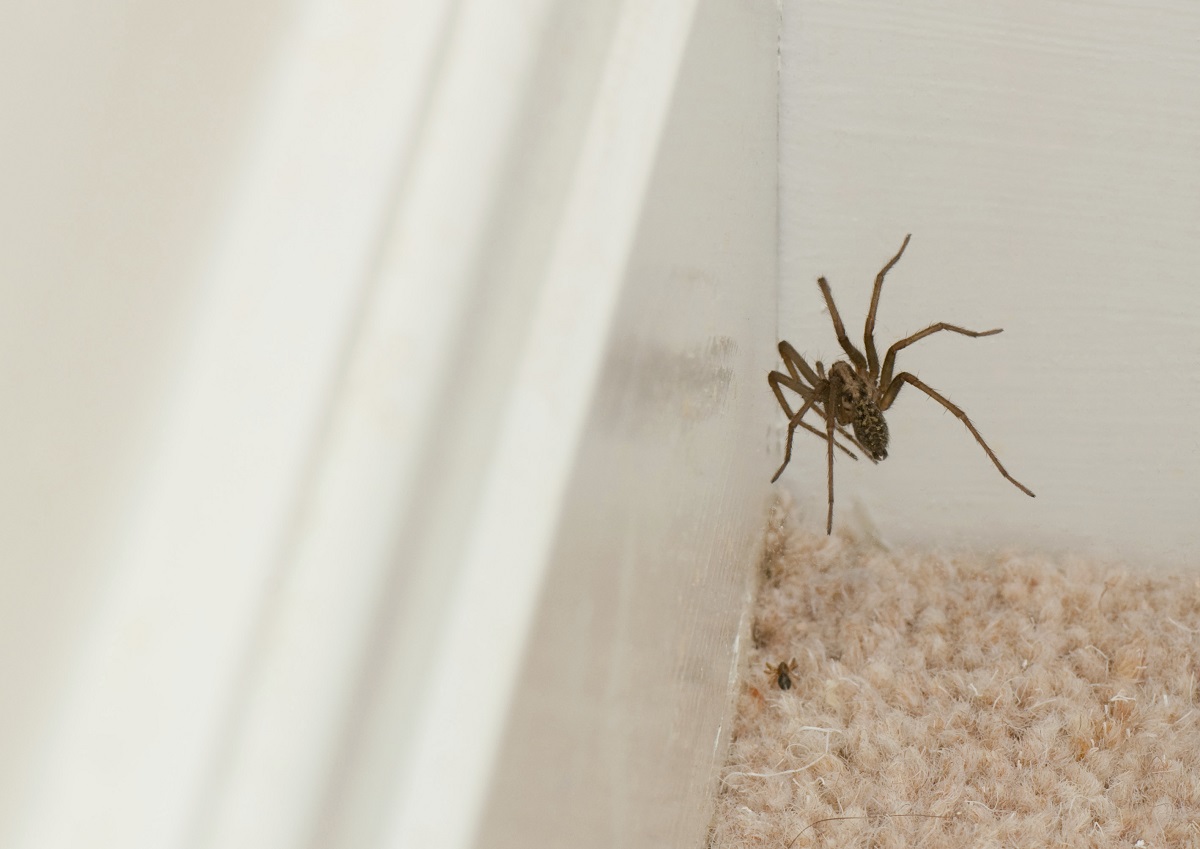
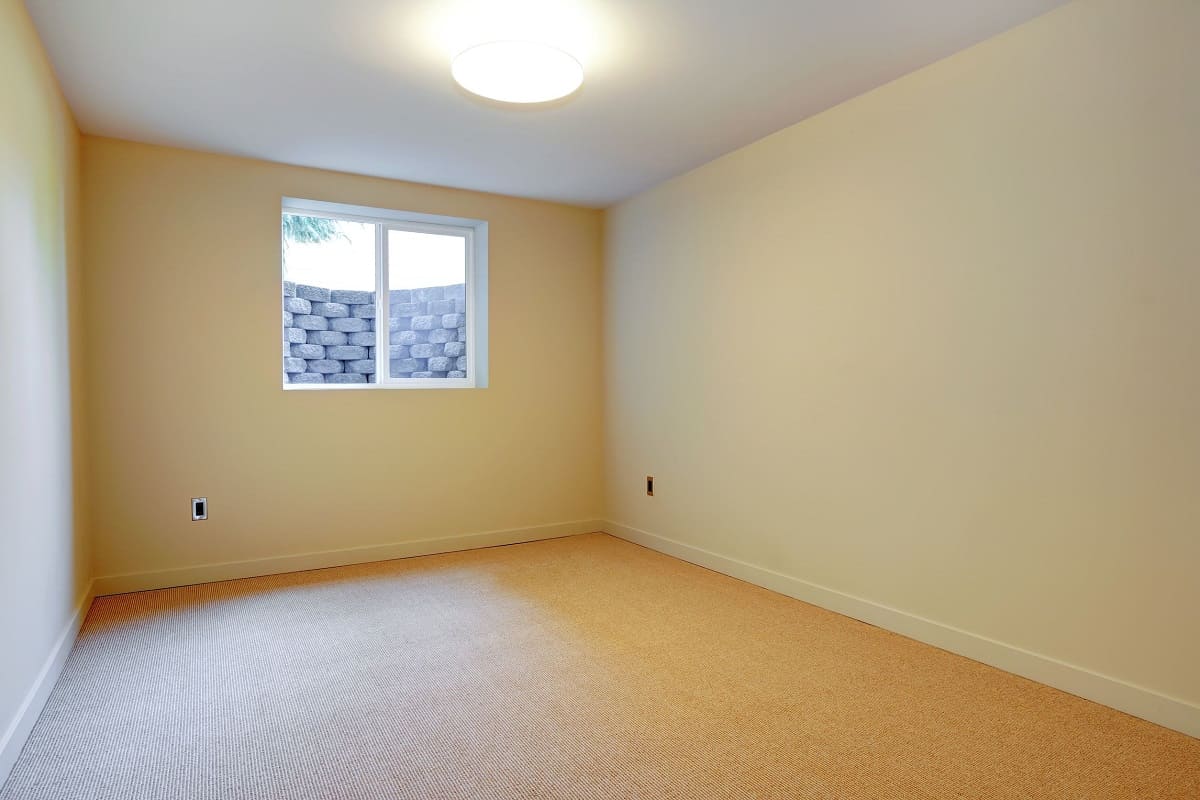
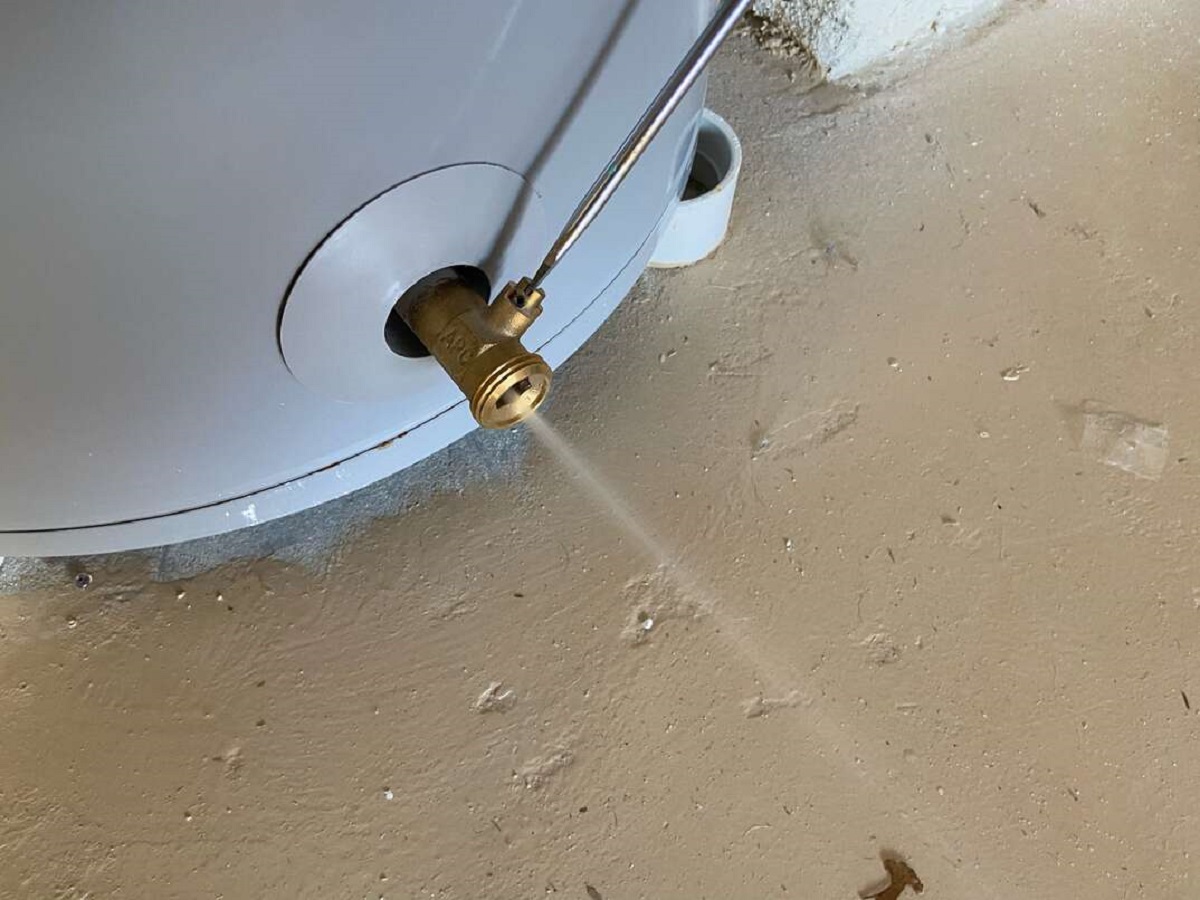
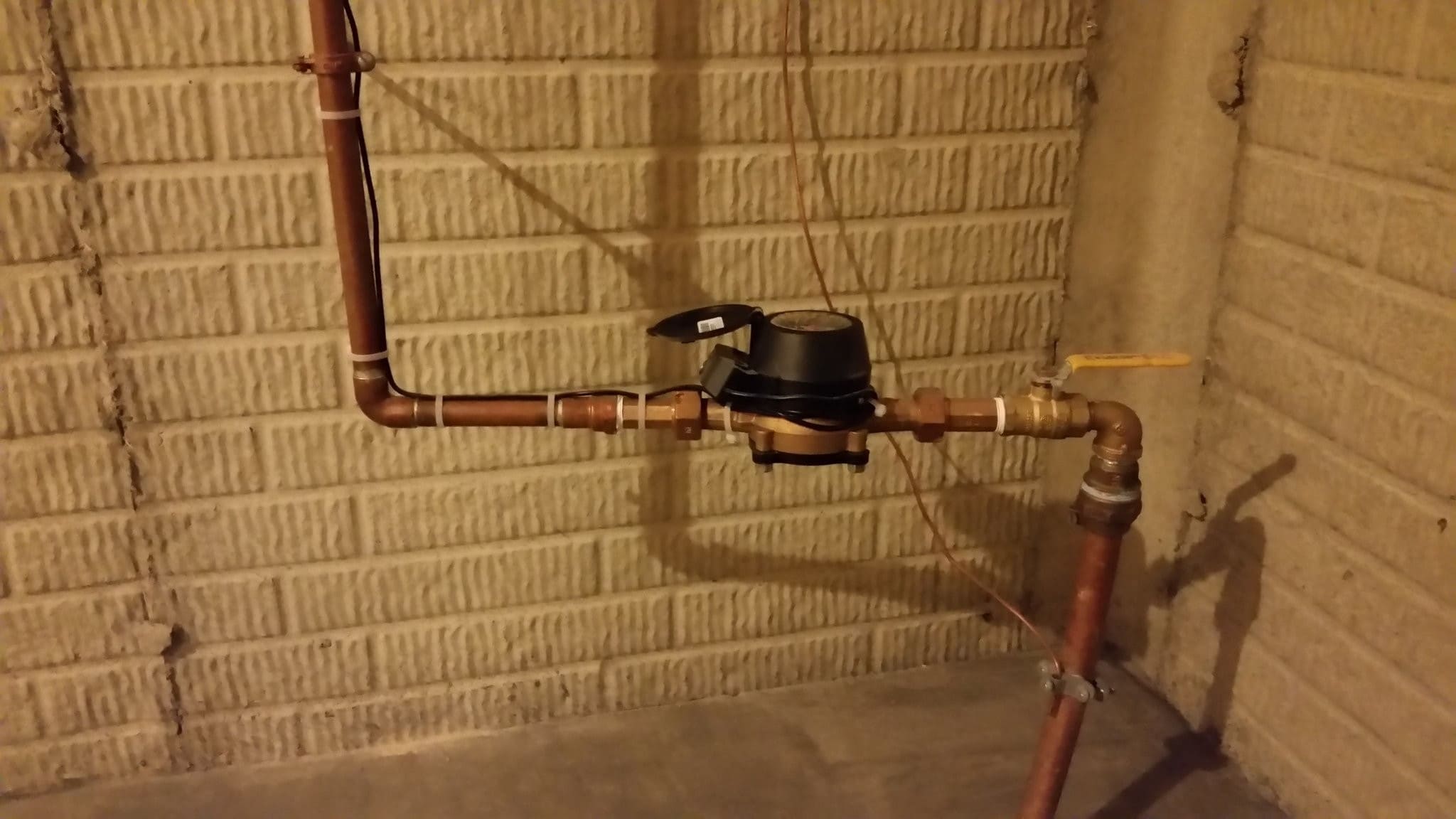
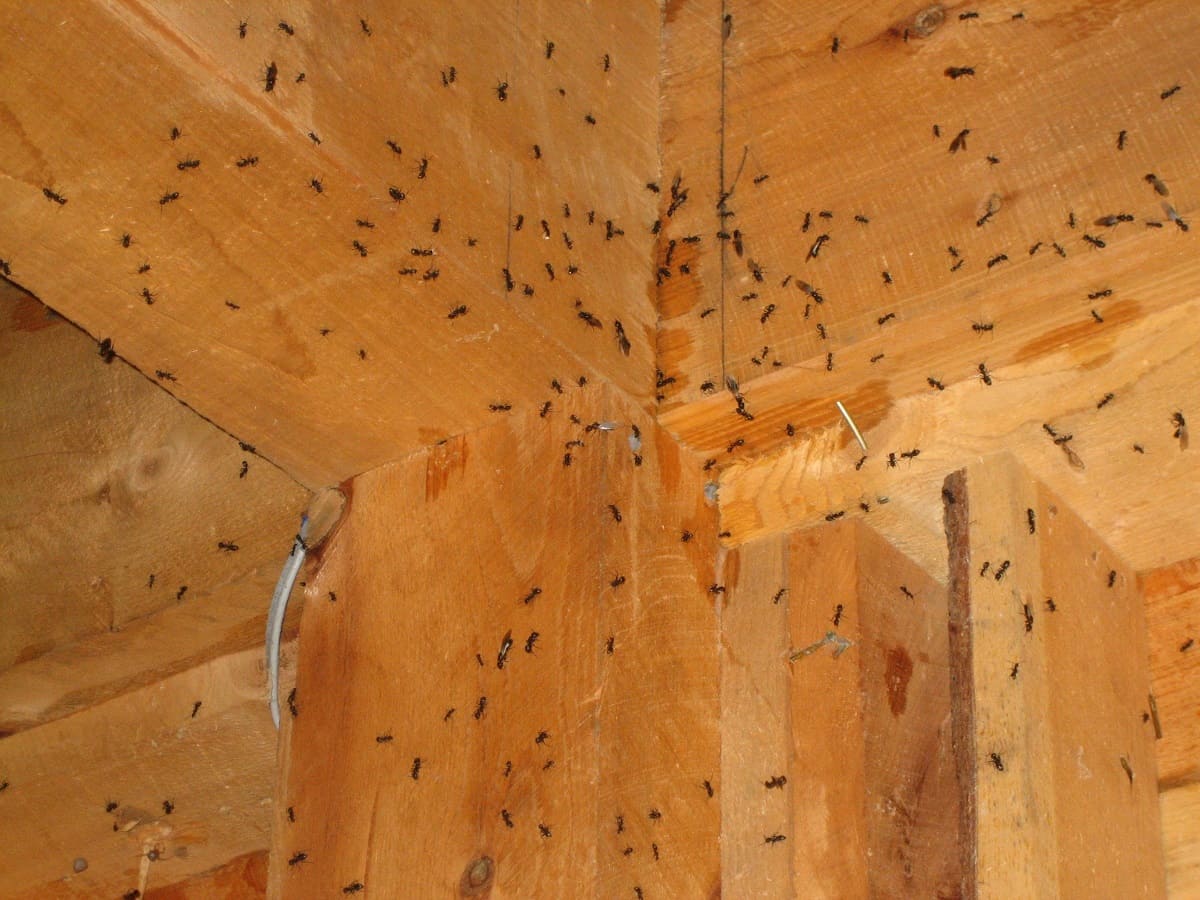
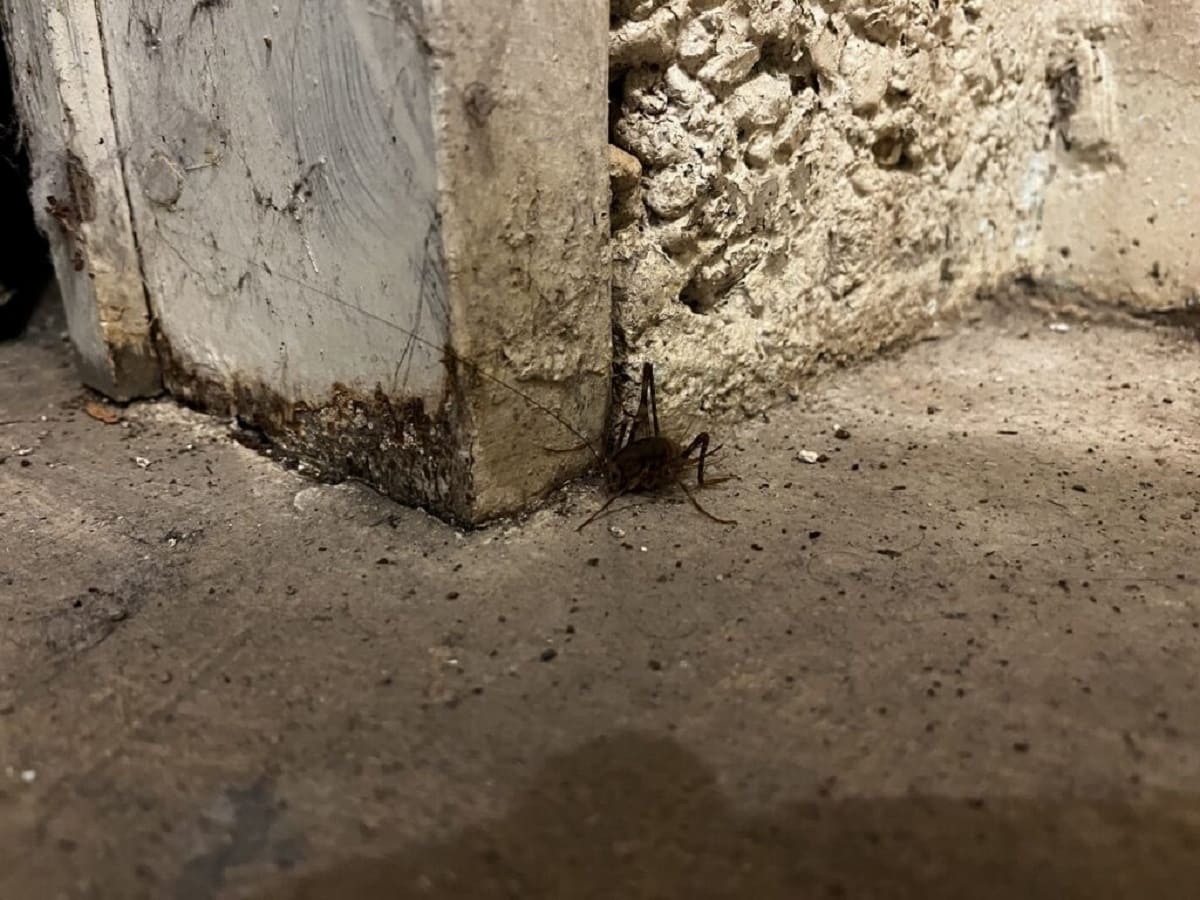
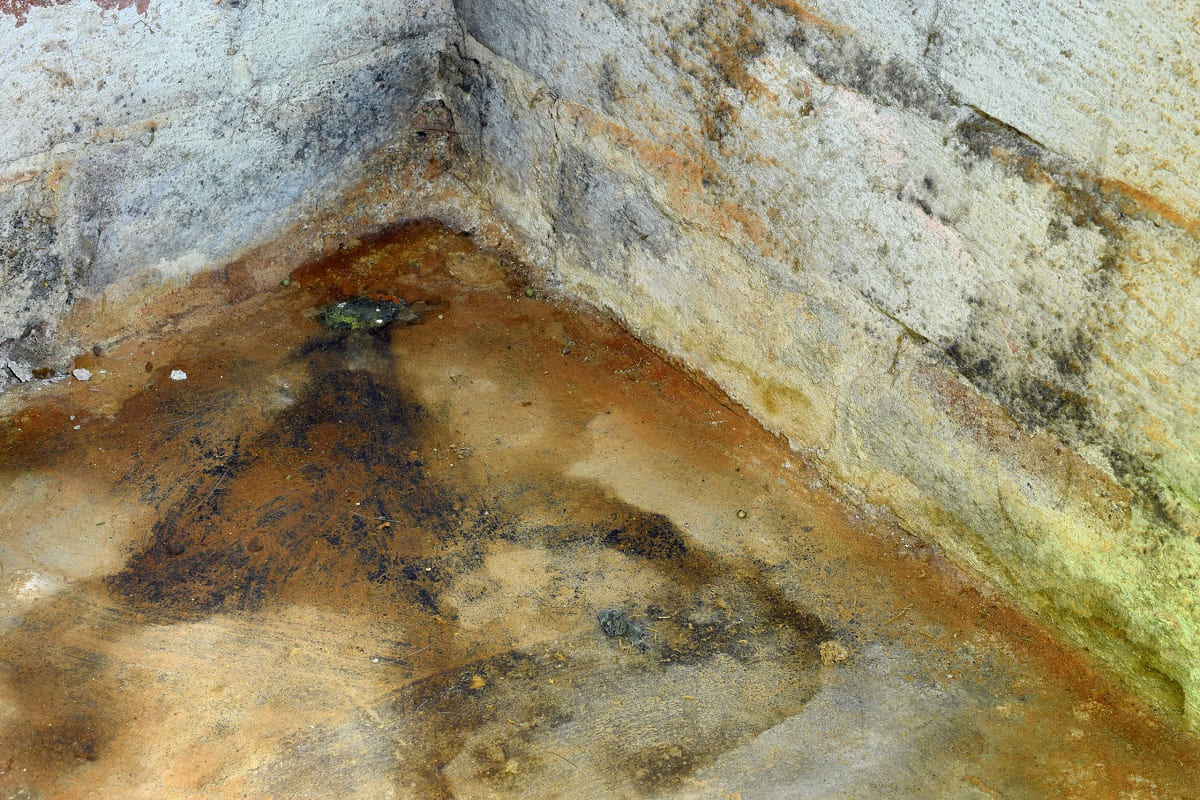
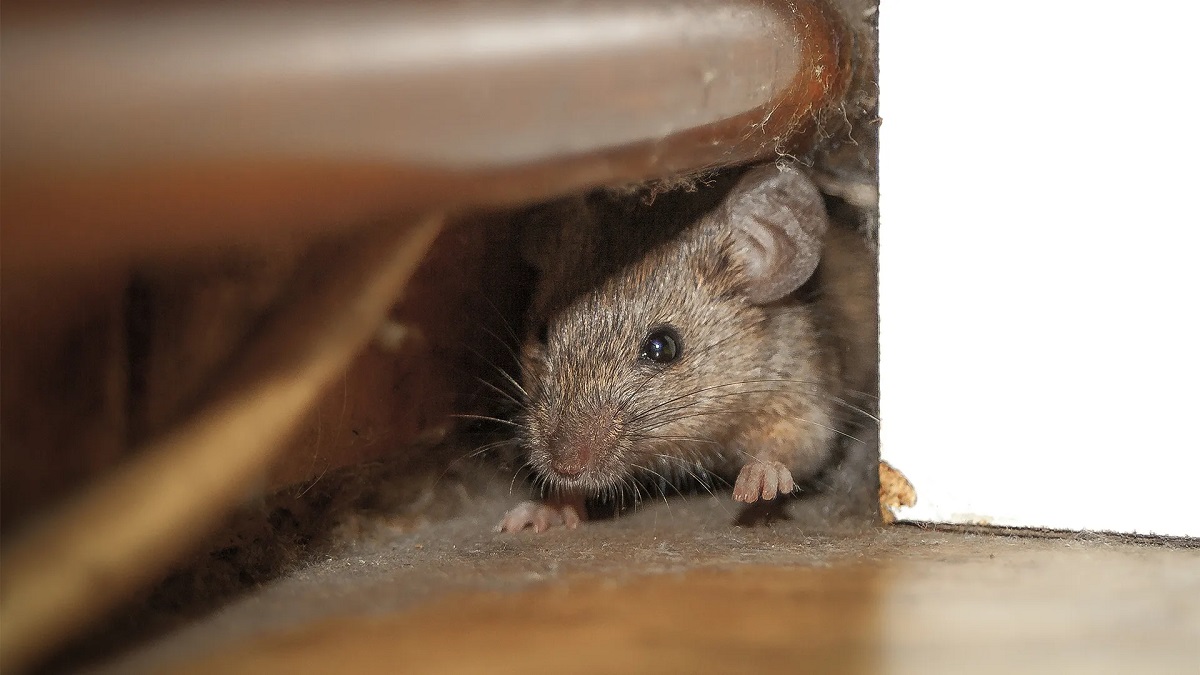
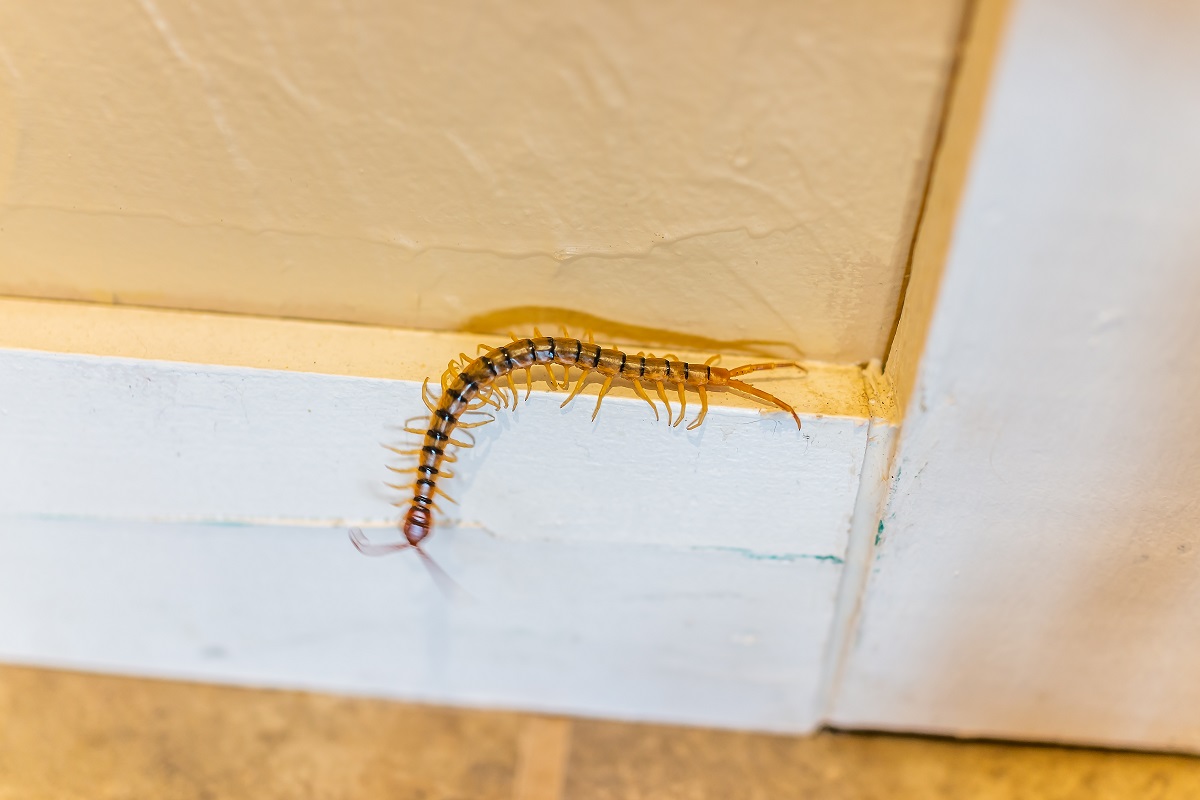

0 thoughts on “How Does Water Get Into The Basement”